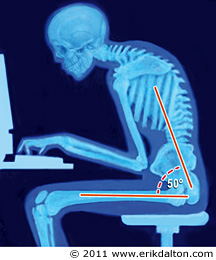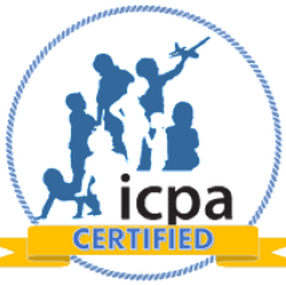
“GOOD posture not only protects you against back pain, it also improves your overall health and appearance. POOR posture, on the other hand, promotes back pain and can affect the position and function of your abdominal organs, inhibit breathing and oxygen uptake, and cause headaches. It may also affect mood.” -Harvard Health Publications/Harvard Medical School
Even if they didn’t realize it at the time, all those years of our parents telling us to sit up straight and not slouch not only helped us look poised as we were growing up, but they also had a positive effect on our posture.
Posture refers to how the body is aligned and positioned in conjunction with the force of gravity acting upon it. Regardless of whether we are sitting, standing or lying down, there is always a gravitational force that applies pressure on our ligaments, joints and muscles.
In ideal conditions, the back view of the spine should have no lateral curve and the legs should be symmetrical. From the side, the spine should form an S-shaped curve. An imaginary line should drop from the apex of the head through the center of gravity in the body and pass through the tip of the shoulder, the center of the hip joint, the center of the ankle joint and slightly behind the knee joint. This proper posture is a sign that we’ve evenly distributed gravity’s force throughout our body so that no one part is fatigued or overstressed.
Indications of poor posture include a slouching of the shoulders or forward leaning of the head. Poor posture impedes lymphatic drainage in the neck and causes strain on the posterior neck muscles. The extra weight on the discs can lead to premature arthritis of the neck. Poor posture can also include a forward tilt of the pelvis. This causes weight to shift in the body and can increase the curvature of the spine, which is associated with muscle weakness. Posture of this sort can lead to chronic lower back pain, muscle pain, weakness in the legs and premature spinal arthritis of the joints and discs.
Poor posture can result from car accidents, sports injuries, loss of bone density and sitting or standing improperly. Many pe ople today have posture problems due to the way they sit. When we drive or use a computer, we frequently have the tendency to lean the head and neck forward, which causes the spine to round forward too. The weight of the head and upper body becomes heavy, and we must exert muscular energy and strain on the spinal ligaments to hold ourselves in this leaning position.
ople today have posture problems due to the way they sit. When we drive or use a computer, we frequently have the tendency to lean the head and neck forward, which causes the spine to round forward too. The weight of the head and upper body becomes heavy, and we must exert muscular energy and strain on the spinal ligaments to hold ourselves in this leaning position.
The first step to correcting poor posture is being aware of what causes it and what we can do to correct it. We need to be conscious of how we sit when we drive or work at our desks. Take frequent breaks to do neck exercises and stretch shoulder muscles. Use ergonomic gear to create a work environment that puts less stress on the spine. Invest in a neck pillow for sleeping.
If we’re unsure of what steps we should take for our particular posture problems—or if we feel pain in the neck and shoulders—a chiropractor may be able to help with the issue. Chiropractors are trained in proper body alignment and can provide us with suggestions and solutions for maintaining healthy posture throughout our daily lives.
References:
http://www.necksolutions.com/neck-posture.html.




